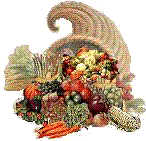
| Fahrenheit | Celsius | Gasmark |
| 250 degrees Fahrenheit | 130 degrees Celsius | Gasmark 1/2 |
| 275 degrees Fahrenheit | 140 degrees Celsius | Gasmark 1 |
| 300 degrees Fahrenheit | 150 degrees Celsius | Gasmark 2 |
| 325 degrees Fahrenheit | 160 degrees Celsius | Gasmark 3 |
| 350 degrees Fahrenheit | 180 degrees Celsius | Gasmark 4 |
| 375 degrees Fahrenheit | 190 degrees Celsius | Gasmark 5 |
| 400 degrees Fahrenheit | 200 degrees Celsius | Gasmark 6 |
| 425 degrees Fahrenheit | 220 degrees Celsius | Gasmark 7 |
| 450 degrees Fahrenheit | 230 degrees Celsius | Gasmark 8 |
| Appliance | Temperature | Cooking Time | Energy Use |
| Microwave | 100% "High" Setting | 15 Minutes | 0.36 kWh |
| Crockpot | 200 "Low" setting | 420 Minutes | 0.70 kWh |
| Toaster Oven | 450 | 50 Minutes | 0.95 kWh |
| Convection Oven | 325 | 45 Minutes | 1.39 kWh |
| Electric Oven | 350 | 60 Minutes | 2.00 kWh |
| Gas Oven | 350 | 60 Minutes | 1/3 elctric cost |
Energy saving oven use
Thanks to the Texas State Dept. of Energy, the chart above shows several methods of cooking the same meal and the energy consumed by comparison. For example, your microwave requires about the same amount of energy per hour to operate as your electric oven (roughly 17¢). But, since it cooks food so much more quickly, it saves you time, energy and money. In contrast, a gas oven costs only 7¢ per hour. So, your decision whether to use your microwave or your gas oven should be based on the length of time you need to cook in either one to get the same results.
Other energy saving hints
If Possible, Use A Pressure Cooker. By using steam pressure, they cook at a higher temperature and reduce cooking time.
Keep Pots & Pans Covered. Water boils faster and foods cook quicker.
Use The Smallest Pot Or Pan Necessary. Smaller pans use require less energy.
Match Pan Size To Element Size. For instance, a 6" pan on an 8" element will waste 40% of the energy produced by the element. Pans with flared sides or bottoms that are smaller than your burner let heat escape. If pots and pans are too big, or have warped bottoms, your food won't cook evenly. For most foods, a medium-weight aluminum pan cooks faster and more efficiently than other types. Save your heavier pots and pans for foods which require slow and steady cooking.
Use Reflective Burner (Drip) Pans. Reflective burner pans under the elements reflect heat up toward the cooking surface. Always keep the burner pans clean and shiny.
Use Flat Bottom Cookware. Burner elements are significantly less efficient if the pan does not have good contact with the element.
Preheat Ovens Only When Required. Except for baking, most foods can be cooked without preheating. Use your oven light and look through the window instead.
No Peeking! Sneak previews are energy wasters, each time you open the oven door a significant amount of heat escapes. Every time you open the oven door, you lose about 25 degrees of heat. This means that your food will take longer to cook and your oven needs to work that much harder to keep the temperature consistent.
Don't Cover Oven Racks With Foil. Foods cook more quickly and evenly when air circulates freely. Stagger pans on upper and lower racks.
Bake In Glass Or Ceramic Cookware. You can turn the temperature down by 25 and foods will cook in the same time.
Timers & Meat Thermometers Avoid Overcooking. Not only does overcooking ruin the meal, it wastes energy as well.
Turn The Stove Or Oven Off Before Cooking Is Done. Burner elements can be turned off just before cooking is done, it will remain hot for a short time. Ovens can be turned off 15 - 20 minutes before done.
Energy-Saving Cleaning Tip: Use the self-cleaning feature after you've cooked a meal. The oven will still be hot and this feature will require less energy.
Improve Microwave Efficiency. Keep the inside surface clean to promote efficient cooking.
Buy Gas Appliances (No, I'm Not In The Gas Business). If you're in the market for a new range or oven, consider buying gas. They always cost less to operate than electric appliances. And, they're usually on for a shorter period of time.
Boil Until Boiling ... And Not A Minute Longer! Once water or other liquids reach a state of boiling, they won't get any hotter. So if you need to bring something to a boil, turn the burner down or off when it starts to boil.
Think Smart When Planning Meals. A meal like roast chicken, green bean casserole and brownies can all be cooked at the same time because they cook at the same temperature. It's easier on you and your oven.
Don't Waste Cooking Heat! A gas oven can retain heat up to 15 minutes, an electric oven up to 30 minutes. Even your electric range top burner can stay hot for an extra 3 to 5 minutes. Take advantage of this extra heat to warm up desserts or rolls. After all, you've already paid for it.
Keep Your Oven & Range Clean. An oven or range that's free of grease and baked-on residue will work more efficiently.
Thaw Before You Cook! If you thaw your foods completely before cooking-use the refrigerator- your oven won't have to work so hard to cook your meal.
